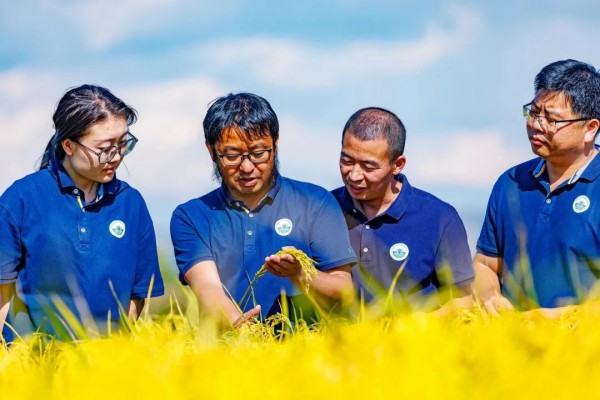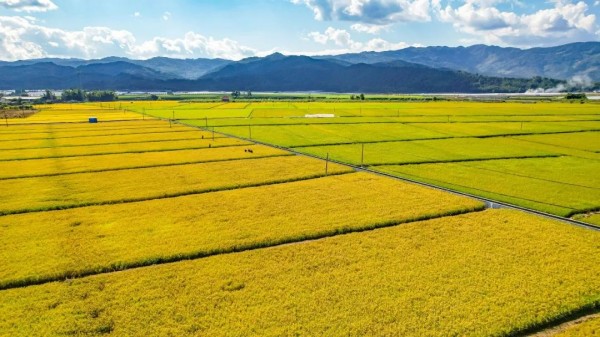YNU research into perennial rice honored by journal Science

Hu Fengyi's team from YNU examines perennial rice in a field. [Photo/ynu.edu.cn]

These fields are full of the rich, warm colors of perennial rice. [Photo/ynu.edu.cn]
Science – the prestigious international weekly, peer-reviewed journal that publishes significant original scientific research, reviews and analyses of current research and science policies – on Dec 16 announced its top 10 scientific breakthroughs for 2022.
Among those honored were the findings on perennial rice by Professor Hu Fengyi and his team at the Institute of Resource Botany at Yunnan University, or YNU – located in Kunming, capital of Southwest China's Yunnan province.
Each year, the editorial team of Science selects one scientific breakthrough champion and nine annual scientific breakthrough finalist awards. They are seen as being the most significant scientific discoveries, scientific advances and trends of the year.
The perennial rice created by Hu's team is an innovation in rice breeding. The crop can be brought in continuously for three to four years with no-till harvest once planted – and harvested twice a year, with an average yield of 6.8 metric tons per hectare per season – which compares to the annual yield of conventional rice of 6.7 tons per hectare.
In planting, from the second year onwards, there is no need to buy seeds, raise seeds, plow fields and transplant them and use other production links: saving on production costs, reducing labor and providing a light, simplified, green and sustainable rice production method.
The innovative research is expected to contribute to food security and ecological integrity, while having important implications for other perennial food crop research.
All rights reserved. Presented by China Daily. 滇ICP备12004993号-2








